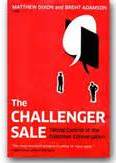
An elevator pitch is a short summary designed to simply define your company or product. As the name implies, it should be short enough that it can be delivered during the span of an elevator ride.
Why the brevity? The truth is that when you are “cold calling” into a prospect, ten to fifteen seconds is all you have to make an initial connection and get permission to continue the conversation. In light of this, it is critical that you can quickly establish trust and pique interest.
Today’s prospects are receiving so many incoming sales calls, that they are particularly wary of being “sold”. The old way of delivering your company’s message is no longer good enough.
Let’s take a look at how elevator pitches have traditionally been made and how they should evolve to become more effective in today’s selling environment.
The Old Elevator Pitch
The call starts with, “I’m Bob with XYZ Printing. How are you today?”
The “clever” segue into the sales pitch, assuming we still have the prospect on the line, goes something like this. “We’re the premier printing company in the area. We’ve been serving the local market for over 20 years and have the most advanced digital printing equipment in the area. Our specialty is quick turnaround and competitive pricing. I’d like to set an appointment to meet with you to show you how we can save you time and money on your next printing project. Would Tuesday afternoon or Wednesday morning be better for you?”
Does that sound familiar? It probably does and there are many problems with this approach:
- “How are you today?” Every telemarketer in the world starts the call by asking about the prospect’s “well-being.” While this is an honest attempt at politeness, prospects know you don’t really care, so it comes across as insincere and makes you sound like a telemarketer.
- The “compelling” pitch by the printing salesperson sounds like the other printing company that called the prospect yesterday. They said they were the best in town and could save him time and money too. Whom should he believe?
- “Tuesday afternoon or Wednesday morning?” How many times have we heard that over used alternative choice close? Nearly every salesperson uses it.
- The salesperson wants an appointment but doesn’t want to take the time to find out if there’s any pain. This is the typical product pusher’s strategy and the prospect knows it.
- The easy blow off that the prospect can, and often does, use is to say, “Just send me some information about it.” And you know how sincere that request is.
The New, Improved Elevator Pitch
Never fear, there is a better way. Take a look at this new, improved approach.
This call starts with, “I’m Bob Smith with XZY Printing. Did I get you at a bad time?”
If you get permission to continue, you’d say, “Thanks for taking my call. Can I take about 20 seconds to tell you why I called, then you can tell me if we need to talk further?”
When you get permission, you’d say, “I’ll be brief, right to the point. We’re one of the leading commercial printing companies in the area. Typically companies switch to us because they’re upset with long turnaround times, concerned about the inconsistent quality of the final product or frustrated that their printer can’t offer any creative ideas to improve the job. Are any of these issues for you?”
Or, you may want to give a specific example of how you’ve helped a competitor with a specific pain, something like “we recently helped [competitor’s name] save $2,000 per month on printing fees and reduce their turnaround time to 48 hours. Is this something that would be helpful to your business?”
If the answer is affirmative, you’d then go on to explore the pain further.
If the answer is negative, you could conclude the call quickly by saying, “Sorry to have bothered you. Have a good day.” And make another call. Remember, you’re trying to find that gold nugget quickly and not waste time with people who are not good prospects.
There are many benefits to this approach:
- Asking if you got him at a bad time is respectful of the prospect’s time. (The overwhelming majority of the people we train say this tactic has been very effective despite the initial concern about making it too easy for him to say that he is busy.)
- The “pitch” focuses on possible problems your company can address, thus begins the qualifying process quickly.
- It’s different.
- You won’t have done anything to destroy rapport.
- You won’t sound like every other salesperson that calls.
Your ability to differentiate yourself in your initial call with a prospect will dramatically improve your success at developing new business. Try our new and improved elevator pitch for yourself – we’d love to hear how it works for you.
 Q4 is upon us. How are you going to focus your team in the coming months to successfully close business and maximize revenue potential? One way is to avoid discounting. This may be easier said than done, especially in the fourth quarter when buyers are working hard to get the best deals possible. But, there are two proven methods of avoiding price discounts that we teach our clients in nearly every workshop we run.
Q4 is upon us. How are you going to focus your team in the coming months to successfully close business and maximize revenue potential? One way is to avoid discounting. This may be easier said than done, especially in the fourth quarter when buyers are working hard to get the best deals possible. But, there are two proven methods of avoiding price discounts that we teach our clients in nearly every workshop we run.







